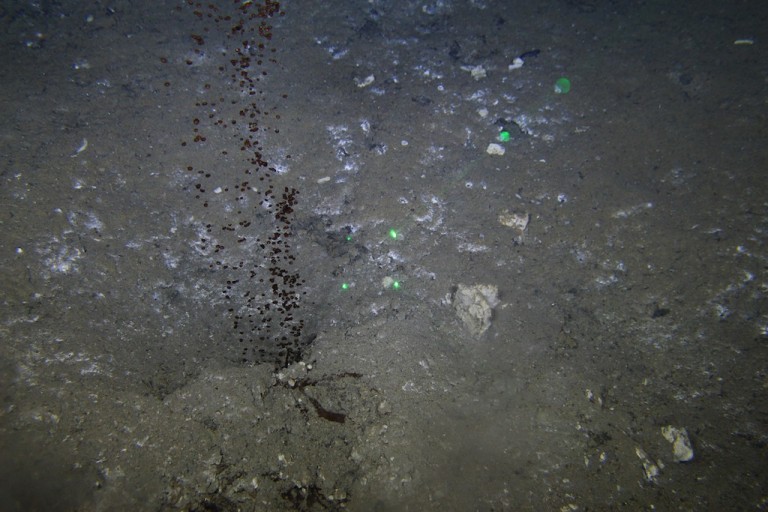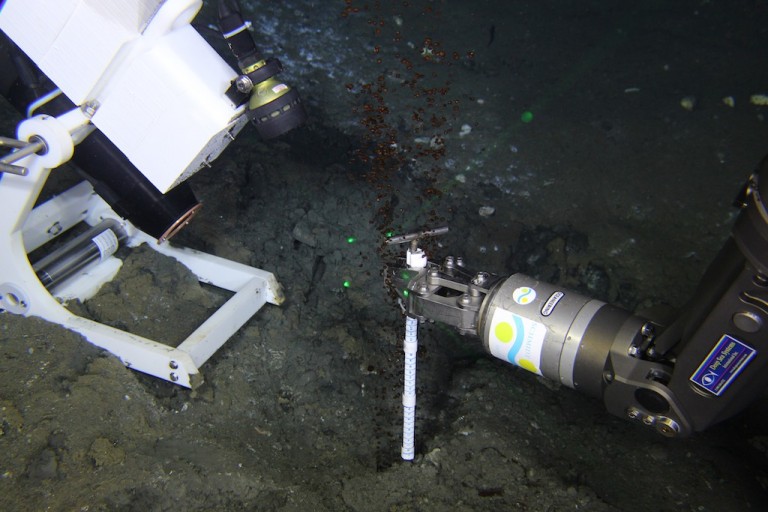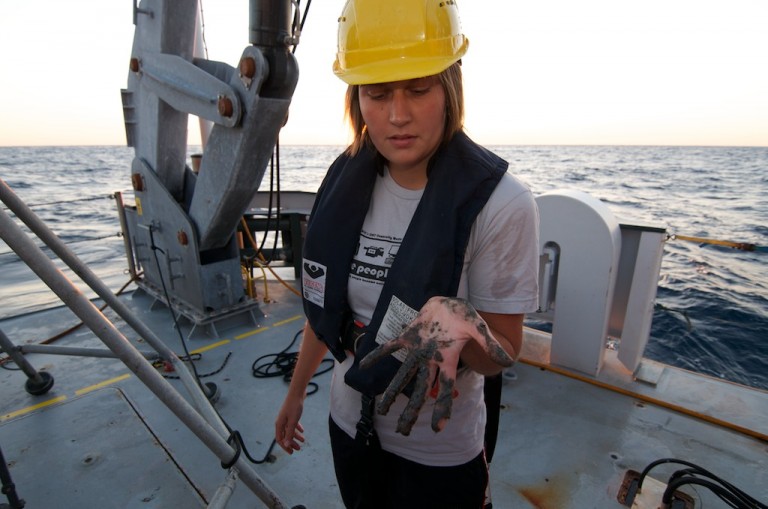We woke to sunny skies this morning and the anticipation of diving the ROV Global Explorer MK3 at the “Megaplume” natural oil seep site.
The pilots and crew launched the ROV into the sea first thing in the morning. We watched live ROV video on the monitors installed throughout R/V Falkor with anticipation as the vehicle descended to the seafloor nearly 1,200 meters (4,000 feet) below.

The ROV quickly encountered evidence of seeps. The video showed patchy white microbial mats and clam shell fragments that are signs of seeps. The scientists and ROV pilots determined a course for the vehicle to survey, using the vehicle’s forward looking sonar to help locate active plumes. Just as Dr. Ian MacDonald had described, a column of dark bubbles rising from a cleft in the seafloor soon came into view. Small oily spheres effervesced like the bubbles of a carbonated drink.

One of the main objectives for the dive was to have the ROV position a video time-lapse camera (VTLC) designed by Dr. Ian MacDonald to study the bubble dynamics. Ian’s graduate student Caroline Johansen will be analyzing the video data for her research project. The VTLC has been programmed to record 15-second video clips every 5 minutes. It can run for several days on its battery pack. The camera system also controls an external lamp that is necessary in this pitch-black environment. Ian and Caroline have planned to leave the VTLC at the plume until Friday when we will return to the area with the ROV to retrieve it.
Another dive objective was to prepare the second ECOGIG lander for recovery. The lander operations have had several adjustments over the past days in response to weather delays. Plans to meet with R/V Pelican at sea were cancelled. The scientists were disappointed but quickly worked out alternate plans. Fortunately Beth Orcutt had a second transponder with her as a back-up for the original operation and would be able to transmit the necessary codes to release the lander from the seafloor. With some brainstorming about cranes, deck space, and sample handling, a plan was put into place to recover the lander using R/V Falkor.

After the ROV situated the time-lapse camera, it flew to the lander site to do the first steps in the recovery process. Just like the sister lander that the ROV visited a few days ago, an experiment on this lander required a high-pressure valve to be closed to prevent gases from escaping when the lander ascends to the surface. The ROV approached the lander on the seafloor, closed the valve, and then spent some time surveying the area around to document the position of the lander and instruments. The ROV also collected sediment push cores and water samples around the site before it was brought back to the surface.
The science team transferred all the ROV samples to the lab and then quickly readied the multicore for deployment. It was a great relief to all when the instrument returned with its eight core liners filled with mud. The oily and smelly sediment was obviously rich in hydrocarbons. The scientists did a second multicore in the same location and got more samples. This resulted in lots of material for the researchers to handle. The sediment team—Barbara MacGregor, Sara Kleindienst, Jennie McClain Counts, Maggie Esch, Carolin Dewald, Caroline Johansen, and Mauricio Silva—worked into the wee hours of the morning processing all of the samples.
